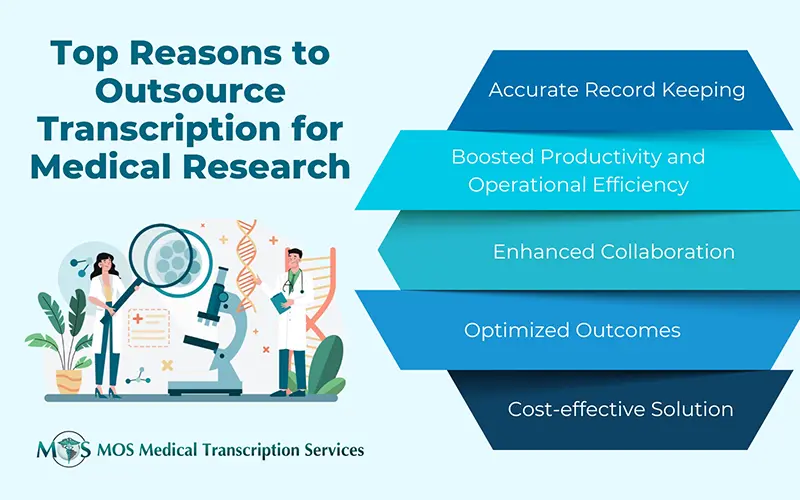Medical records must contain pertinent and up-to-date information on the advice and/or treatment provided to a patient. Medical transcription outsourcing allows providers to ensure the patient record is an accurate and complete reflection of the patient encounter to facilitate continuity in patient care. Recent doctor visits, discharge summaries, lab and test results, medications, immunizations, allergies are all documented as soon as possible and to be compliant with relevant legislation and industry regulations. However, for years, one major concern has been that of medical overuse – medical interventions which are unnecessary and for which the potential harms may exceed the potential benefits.

Potential Areas of Medical Care Overuse
According to the Institute of Medicine, up to $210 billion is spent on unnecessary medical testing and medical care annually in the United States (www.hcinnovationgroup.com). In addition to the physical and psychological risks it poses for patients, unnecessary care increases medical costs. Further, downstream services such as unnecessary tests may lead to more unnecessary testing and treatment, causing medical errors and other negative consequences. Studies have identified the areas where overuse is commonly reported as:
- Medications
- Screening tests
- Diagnostic testing
- Therapeutic procedures (surgery and other invasive procedures)
- Site of care delivery (stay in a hospital when a less aggressive site would be sufficient), and
- End-of-life care
Examples of low-value wasteful medical care are: annual physical exams, nuclear stress tests for low-risk chest pain, cardiac imaging in people with low-risk symptoms, aggressive over-treatment for breast cancer, unnecessary thrombophilia testing due to concern about passing on the abnormal gene to children, specialty referrals, behavioral health (BH) therapy, and use of durable medical equipment (DME).
Reasons for Medical Care Overuse
There are many causes of medical overuse. The authors of a 2014 study published in JAMA Internal Medicine pointed out that each factor reinforces and amplifies the others, resulting in a “perfect storm of ‘more.'” According to them, the factors contributing to unnecessary overuse are:
- Physician training and culture: As a recent report from the Memorial Sloan Kettering Cancer Center explains, physicians are trained not to miss anything. In cancer, especially, missing something can have grave consequences. Providers often end up doing too much or ordering too many tests. In a survey by researchers from Johns Hopkins and Harvard, respondents cited the reasons for overtreatment as: fear of malpractice (85%), patient pressure or request (59%), and difficulty accessing medical records (38%).
- Fee-for-service payment structure: This payment model, which is now recognized as flawed, has led physicians to increasingly perform more procedures and more complex interventions that have little benefit or no benefit at all. The Affordable Care Act, signed into law March 2010, has several provisions that promote focus on increasing value of care. However, a 2017 Forbes report noted that about 86% to 95% of U.S. healthcare providers are still reimbursed based on the number of services they provide. This is driving up unnecessary care and healthcare costs.
- Intensive marketing by developers of tests, drugs, and procedures: Pharmaceutical companies aggressively market their products, leading to overprescription of drugs way beyond their clinical usefulness for patients. Direct marketing to consumers via advertising on television, the Internet, the radio and in print is another factor driving inappropriate prescribing.
- Defensive medicine: Medical Economics defines defensive medicine as “physicians ordering tests and procedures, making referrals or taking other treatment steps to help protect themselves from liability rather than to benefit their patients’ care”. Research suggests that physicians’ malpractice concerns are a key driver of habits of defensive medicine. Physicians who had a high concern about allegations of malpractice are more likely to order aggressive testing when diagnosing patients with new complaints of chest pain, headache, or lower back pain.
- Cultural preference for technological solutions: Patients often prefer treatments that require visible effort and are drawn to expensive, ostentatious technology. While there are many, low-tech technologies in health care that do less harm, high-tech is winning. While technological advances in medicine have actually improved quality of life and increased life span, they can have very harmful effects. For instance, life-saving radiation therapy can have grave consequences if errors occur.
- Lack of health care cost transparency: Low-value healthcare services, such as unnecessary imaging are expensive and time-consuming, but provide very little real benefit to the patients in terms of time and money spent. A 2016 study from The Dartmouth Institute for Health Policy and Clinical Practice reported that while 92.2 percent of the physicians surveyed said they felt responsible for managing costs, only 37 percent actually had a proper understanding of the costs of tests and procedures. About one-third of physicians actively tried not to think about costs while making treatment decisions. Such lack of awareness on the part of the provider is a major cause of unnecessary, costly tests and procedures.
Addressing Medical Care Overuse
Improper testing, needless procedures and interventions, and other low-value services are increasing costs of medical care as well as exposing patients to potential harm. The problem of medical care overuse can be addressed only by educating all stakeholders – physicians, patients, hospital and insurance administrators, policymakers, and pharmaceutical and medical device manufacturers – on the importance of high-value care. Other measures recommended by the 2017 ACP International Forum on Reducing Overuse and Misuse in Medical Care include:
- Value-based reimbursement models in place of fee-for service models.
- Strengthening primary care, which will promote cost-effective, comprehensive, and continuous care, helping patients avoid unnecessary hospitalization, emergency visits, procedures, and interventions.
- Evidenced based, individualized care, accounting for quality of life and patient choice.
- Electronic medical records with proper connectivity and systems that support high-value decision making and reduce duplication.
- Eliminating or minimize the influence of for-profit corporations.
Medical transcription services help physicians ensure error-free medical record data entry. However, when it comes to avoiding medical care overuse, physicians need to make sure that tests and treatments they order are really beneficial for the patient.


